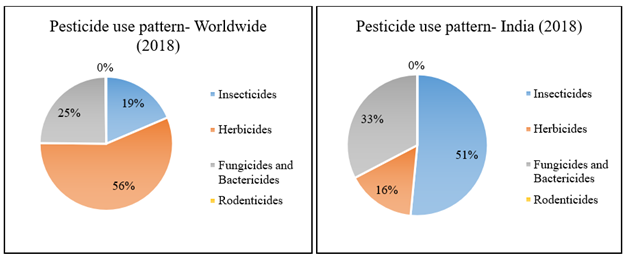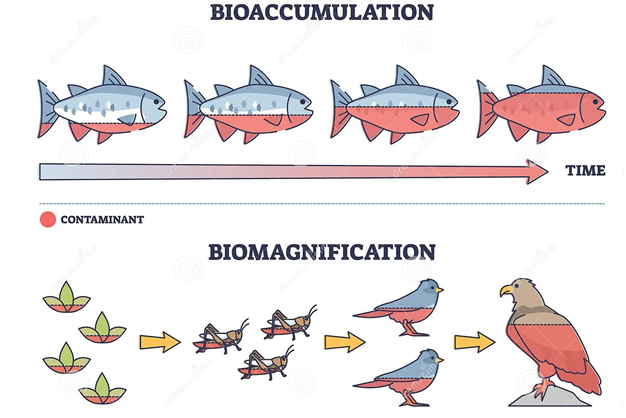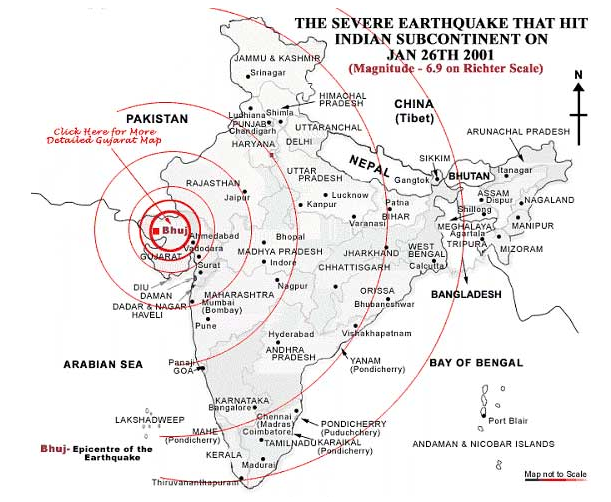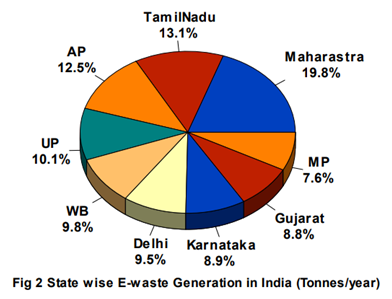Down To Earth(May16-31 2023)
1. Panchayati Raj (Sept 1-15, 1994)
- Madhya Pradesh took a head-start in implementing the 3-tier Panchayati Raj under the Madhya Pradesh Panchayati Raj Act, 1993. Back then also availability of funds was a major issue faced by gram panchayats and is continuing even today.
About Panchayati Raj:
- Although the Panchayati system existed in India since Vedic Period, it was formally recognised in 1992 by 73rd and 74th amendment acts.
- It was recommended by Balwant Rai Mehta Committee in 1957, Ashok Mehta Committee in 1977 etc. over the years.
- Article 40 of the Constitution which enshrines one of the Directive Principles of State Policy to organize village panchayats and endow them with such powers and authority is fulfilled by these amendments.
- It provides for direct democracy in India.
73 Amendment Act |
74 Amendment Act |
|
|
Significance of 73 and 74 amendments:
- Effective and Efficient: PRI is viewed as a platform to provide social justice through the mechanism of dispute resolution, making it accessible, cost-effective, and participatory.
- Developmental Role: Panchayats have played a notable role in the development of the rural areas in India.
- Good Governance: PRIs provide on site and continuous governance different from post facto and remote control governance.
- Accountability: Since PRI are direct democracy thus they tend to be more accountable to people electing them.
Issues with LSG Bodies:
- Funds: Although Finance Commision recommends for the fund devolution but the same is not reflected on ground level. Whatever they receive is ;too little, too late’.
- Functions: PRIs also lack role and goal clarity. PRIs are independent in functioning at village but administrative clarity due to half measures of decentralization by state or district administration. This lack of clarity could hamper the effectiveness of the process, subsequently leading to confusion and ambiguity.
- Functionaries: It seems PRIs have too many responsibilities with neither the means nor man power to achieve it. PRIs suffer in planning and execution of projects without any support and hand holding from the states.
- Proxy Presence: Many a times sarpanch is rubber stamp with actual power lying somewhere else. Eg: ‘Sarpanch Pati’ concept especially in northern India. Indulgence of political parties and local leaders in PRI elections.
- Goal Distortions: PRIs too become populist and take public pleasing decisions rather than developmental.
2. Pesticides and its impacts (Nov 16-30, 1996)
- Pesticides are the chemical substances used to kill, repel, or control forms of animal and plant life considered to damage or be a nuisance in agriculture and domestic life. The term pesticide covers a wide range of compounds including insecticides, fungicides, herbicides, rodenticides, molluscicides, nematicides, plant growth regulators and others.
Pesticides in India:
- The production of pesticides started in India in 1952 with the establishment of a plant for the production of BHC.
- India is the fourth-largest producer of agrochemicals in the world.
- There are 293 pesticides registered in India.
- It is reported that 104 pesticides are still being produced/used in the country despite being prohibited in two or more nations around the world.
- Out of total insecticides used for pest management in India, 50% are diverted to cotton pest management.

Benefits of Pesticides:
- Productivity Increase: It is the direct gain expected from their use. For example the effect of killing caterpillars brings higher yields and better quality of cabbage.
- Protection from yield Loss: Weeds reduce yield of dry land crops by 37–79%. Severe infestation of weeds, particularly in the early stage of crop establishment, ultimately accounts for a yield reduction of 40%. Herbicides provided both an economic and labor benefit.
- Other uses: Herbicides and insecticides are used to maintain the turf on sports pitches, cricket grounds and golf courses. Insecticides protect buildings and other wooden structures from damage by termites and wood boring insects.

Hazards of Pesticides:
- Direct Impact: Globally more than three million acute poisoning cases with 220,000 deaths occur annually. The high risk groups exposed to pesticides include production workers, formulators, sprayers, mixers, loaders and agricultural farm workers.
- Quality of Foods: Use of pesticides contaminates the quality of food items. In India the first report of poisoning due to pesticides was from Kerala in 1958, where over 100 people died after consuming wheat flour contaminated with parathion.
- Environmental Problems: In addition to killing insects or weeds, pesticides can be toxic to a host of other organisms including birds, fish, beneficial insects, and non-target plants.
- Water Contamination: Pesticides contaminate both surface water through runoff and groundwater through percolation.
- Loss of Soil Fertility: Accumulation of chemicals harm beneficial bacteria and create nutritional imbalance.
Bioaccumulation
BiomagnificationBiomagnification or bioamplification is the increase of persistent chemicals in the tissues of the organisms relatively at a higher level of the food chain.  |
Conclusion:
- Pesticides are often considered a quick, easy, and inexpensive solution for controlling weeds and insect pests in urban landscapes. However, pesticide use comes at a significant cost. The best way to reduce pesticide contamination (and the harm it causes) in our environment is for all of us to do our part to use safer, non-chemical pest control (including weed control) methods.
3. Bhuj Earthquake (Feb 16-28, 2001)
A massive earthquake hit Bhuj, Gujarat on 26 January, 2001. The magnitude of the quake was 6.9 on the Richter scale. It killed more than 20,000 people and injured more than 1,50,000 others. The quake left hundreds of thousands homeless and destroyed or damaged more than a million buildings. It forced the government to rethink their strategies and planning regarding earthquakes.

Earthquakes in India:
- As per the current seismic zone map of the country (IS 1893: 2002), over 59 per cent of India’s land area is under threat of moderate to severe seismic hazard.
- The Koyna earthquake in 1967 led to revision of the seismic zoning map, resulting in deletion of the non-seismic zone from the map. The areas surrounding Koyna were also re-designated to Seismic Zone IV, indicating high hazard.
- The increase in earthquake risk is due to a spurt in developmental activities driven by urbanization, economic development and the globalization of India’s economy. The increase in use of high-technology equipment and tools in manufacturing and service industries has also made them susceptible to disruption due to relatively moderate ground shaking.
Do's in Earthquake:
- If indoors
- Drop to the ground; take COVER by getting under a sturdy table or other piece of furniture; and HOLD ON until the shaking stops. If there is no a table or desk near you, cover your face and head with your arms and crouch in an inside corner of the building.
- Protect yourself by staying under the lintel of an inner door, in the corner of a room, under a table or even under a bed.
- Stay away from glass, windows, outside doors and walls, and anything that could fall, (such as lighting fixtures or furniture).
- Stay in bed if you are there when the earthquake strikes. Hold on and protect your head with a pillow, unless you are under a heavy light fixture that could fall. In that case, move to the nearest safe place.
- Use a doorway for shelter only if it is in close proximity to you and if you know it is a strongly supported, load bearing doorway.
- Stay inside until the shaking stops and it is safe to go outside. Research has shown that most injuries occur when people inside buildings attempt to move to a different location inside the building or try to leave.
- Be aware that the electricity may go out or the sprinkler systems or fire alarms may turn on.
- If outdoors:
- Do not move from where you are. However, move away from buildings, trees, streetlights, and utility wires.
- If you are in open space, stay there until the shaking stops. The greatest danger exists directly outside buildings; at exits; and alongside exterior walls. Most earthquake-related casualties result from collapsing walls, flying glass, and falling objects.
4. Electronic Waste in India (May 16-31, 2010)
- The discarded and end-of-life electronics products ranging from computers, equipment used in Information and Communication Technology (ICT), home appliances, audio and video products and all of their peripherals are popularly known as Electronic waste (E-waste).
- E-waste contains several substances such as heavy metals, plastics, glass etc., which can be potentially toxic and hazardous to the environment and human health, if not handled in an environmentally sound manner.
Hazardous elements of E-Waste:
- Lead is primarily found in all electronic products/ assembly, cathode ray tubes (CRT) etc.
- Cadmium is found in monitor/ CRTs while there may be mercury in switches and flat screen monitors.
- Mercury is also found in CFL, relays and some other specific products.
- Polychlorinated biphenyls are found in capacitors and transformers.
E-Waste in India:
- In 2020-2021, India processed 3.4 lakh tonnes of e-waste.
- Only 22.7 per cent of the e-waste out of the total 10,14,961.21 tonnes generated in 2019-20 in India was collected, dismantled, and recycled or disposed of.

- According to CPCB the generation of e-waste is higher than 3% every year.
E-Waste (Management) Rules:
- Recycling: The 2016 Rules prescribe e-waste recycling targets for anyone dealing with electrical/electronic components, assemblies or equipment (producers).
- Extended Producer Responsibility (EPR) Certificate: producers have to obtain EPR Authorization from CPCB for implementing their EPR and details of their dismantlers/recyclers.
- All the manufacturers, producers, refurbishers and recyclers are required to register on a portal developed by CPCB.
- No entity shall carry out any business without registration and also not deal with any unregistered entity.
- There are 21 types of electrical and electronic equipment (EEE) notified Under the E-Waste (Management) Rules, 2016.
Loopholes in imp1972lementation:
- The small number of dismantlers and recyclers ( about 468 authorized in 22 states) is one of the reasons that all e-waste generated is not handled properly.
- e-waste is many times not mentioned in the list of municipal waste collection and thus is missed from collections.
- Improper collection, handling and lack of clarity among the public regarding e-waste is also a concern for mismanagement.
- Sudden increase of the electronic market is not matched by waste management centers.
India’s Timeline for Environmental Laws
|
1972 |
Wildlife (Protection) Act. It has four statutory bodies—National Board for Wildlife and State Wildlife Advisory boards, Central Zoo Authority, Wildlife Crime Control Bureau, National Tiger Conservation Authority. |
|
1973 |
Chipko movement led by Sunderlal Bahuguna in Chamoli and Tehri-Garhwal districts of Uttarakhand. |
|
1974 |
Water (Prevention and Control of Pollution) Act, 1974 . Amended in 1975, 1977, 1978 and 1988 |
|
1980 |
Forest (Conservation) Act. It prohibits and regulates the dereservation of forests and prevents the use of forest land for non-forest uses without government approval. States stopped from diverting forest land for non-forest use. |
|
1981 |
Air (Prevention and Control of Pollution) Act. Another Air Act for Union Territories was introduced in 1983. |
|
1983 |
Appiko movement, inspired by Chipko, in Shimoga and Uttar Kannada districts in Karnataka. |
|
1985 |
The National Council for Environmental Policy and Planning was converted into the Ministry of Environment and Forests. Narmada Bachao Andolan, a movement led by Medha Patkar and Baba Amte against large dams on River Narmada. |
|
1986 |
Environment (Protection) Act. Born out of the Stockholm Conference and the 1984 Bhopal gas tragedy.1988: National Forest Policy. Recommended 33 percent forest cover for the plains and 67 per cent for the hills. |
|
1989 |
Hazardous Waste (Management and Handling) Rules, promulgated under the EPA. It stipulates that producers of the waste are responsible for decontamination. |
|
1991 |
Coastal Regulation Zone (CRZ) notification issued under the EPA. It demarcated an area of up to 500 meters from the high tide line along the coast as CRZ, classified this area into four categories and regulated activities such as construction in the zone. |
|
1995 |
The National Environmental Tribunal Act, for judicial and administrative solutions for victims of environmental damage passed. |
|
1998 |
Biomedical Waste (Management and Handling) Rules. Segregation, disposal, collection and treatment of this waste was made legally binding on health care institutions. Amended in 2016. |
|
2000 |
Municipal Solid Wastes (Management and Handling) Rules. Noise Pollution (Regulation and Control) Rules. Ozone-Depleting Substances (Regulation and Control) Rules to regulate the production, trade and use of ODS. |
|
2001 |
Energy Conservation Act. The Bureau of Energy Efficiency is a statutory body under this Act. Batteries (Management and Handling) Rules. It puts the onus on manufacturer, importer, consumer and any other dealer in batteries. |
|
2002 |
Biological Diversity Act. A three-tier structure regulates access to these resources. It consists of the National Biodiversity Authority, the State Biodiversity Boards and Biodiversity Management Committees at the grass-roots. |
|
2006 |
Scheduled Tribes and Other Traditional Forest Dwellers (Recognition of Forest Rights) Act. he Act aims to balance conservation with human rights. |
|
2010 |
National Green Tribunal Act as an amendment of the 1995 Act. though the NGT has wide powers, it cannot hear anything under the Wildlife (Protection) Act or the Indian Forest Act, 1927. |
|
2011 |
E-waste (Management) Rules. |
|
2016 |
Compensatory Afforestation Fund Act. Plastic Waste (Management) Rules. In 2021, the rules were amended to prohibit single-use plastic items, having low utility and high littering potential by 2022. The Solid Waste (Management) Rules. This replaced the Municipal Solid Wastes Rules of 2000. The new rules apply beyond municipal areas and incorporate the three Rs: recovery, reuse and recycle. |
|
2017 |
The Wetlands (Conservation and Management) Rules, which decentralized the management of wetlands, giving States the power to identify and monitor them. |
|
2022 |
Forest (Conservation) Rules. This permits private developers to cut forests without the consent of the inhabitants. It is in direct violation of the Forest Rights Act. |
QUICK LINKS